Summary of Feasibility Study for Shahid Soleymani Petro-Refinry
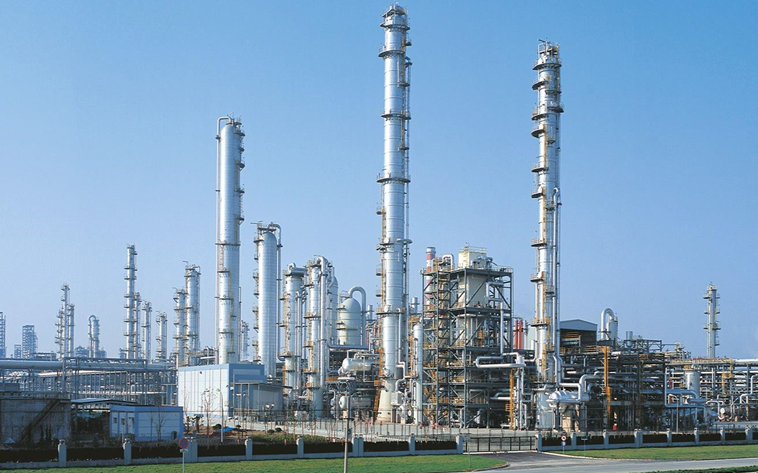
Abstract
A feasibility study for a proposed Shahid Soleymani Petro-Refinery (SSPRC) for Petro Tejarat Shahin Co. Company was performed. Three crude oils production were identified and characterized (Iranian Heavy crude). There is 600,000 barrels per day of crude oil production available for processing in the proposed Petro-Refinery.
The proposed Petro-Refinery will utilize a lower temperature, one train crude oil (Atmospheric & Vacuum) distillations and Stabilized units.
It will have a Kerosene, Gas oil, Vacuum Gas oil, Naphtha Hydro-desulfurizers and a Reformate Unit(CCR) unit to produce more Petro-Refinery products.
The surplus hydrogen from or CCR unit or Hydrogen unit will be used in Hydro-treating Units to produce low sulfur products.
It will have a specialized Fluid Catalytic Cracking (FCC) to convert the Vacuum Gas oil fractions to light and valuable products. Also it will have a Delayed Coker unit to convert vacuum residue and LCO, HCO fractions to light products.
The proposed Petro-Refinery will have LPG and Amine unit to sweet Petro-Refinery LPG & gases and also a Sulfur Unit to convert H2S gases to granule sulfur product.
The proposed Petro-Refinery will have furthermore petrochemical’s units will have Aromatics (BTX) units and will produce Naphtha, Benzene, Toluene and Xylene products.
The Petro-Refinery will require about 7.55 ~7.78 billion dollars for constructing the Petro- Refinery. It will have net present value profit of about 20.63 ~ 20.82 billion dollar. The estimated return on investment are 28.69 ~ 29.18%. The feasibility is positive subject to confirmation of long term crude supply. The study also identified procedures for evaluating processing options as a means for Petro Tejarat Shahin Co. to maximize the value of their crude oil production.

Based on the Petro-Refinery process design in the simulated cases the principal products from 600,000 barrels per day of crude oil would be 5,573 barrels per day of Propylene, 7,034 barrels per day of Benzene, 18,220 barrels per day of Toluene, 24,547 barrels per day of Xylene, 3,9627 barrels per day of LPG, 143,731 barrels per day of Naphtha, 88,307 barrels per day of jet fuel, 263,745 barrels per day of diesel, 4,022 tones barrels per day of petroleum coke and 90 tones per day of granual sulfur.
The sales revenue value of these products was determined to be aproximately MMUS$ 15,602.87 for ~ 24,185.54 for 2025~2048. Based on the preliminary engineering of the process, it was determined that it would cost Petro Tejarat Shahin Co. approximately MMUS$ 7,133.64 ~ 7,361.63 to construct the Petro- Refinery. It would also cost about MMUS$ 12,549 ~19,064 to operate the Petro-Refinery every year. The project would have a return on investment of 28.96 ~29.18 0%. In a highly competitive crude oil market, the price of crude oil would rise relative to the value of the products. Under the highly competitive conditions, the Petro Tejarat Shahin Co. would still benefit because it would realize higher revenues for the crude oil it produces.
Based on the Petro-Refinery process design the principal products from 600,000 barrels per day of crude oil, in addition of Refinery products in the Petro-Refinery cases, some petrochemical products will be produce which that would be 7,034 barrels per day of Benzene, 18,220 barrels per day of Toluene, 24,547 barrels per day of Xylene.
The completion of a study such as this one gives in this report, the knowledge necessary to evaluate processing options and also to be a savvier marketer of its crude oil production.
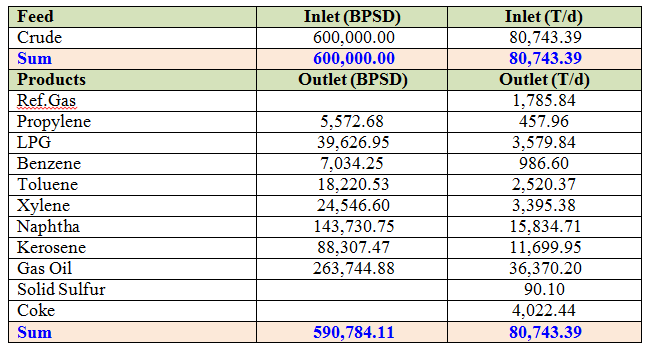

Process Flow Diagram
Figure 4.2.1 is the overall block flow diagram for the proposed refinery and petro refinery. The proposed refinery and petro refinery are contained several process units which illustrate in below paragraphs.
-
Crude Distillation Unit (CDU) &Vacuum Distillation Unit(VDU)
-
Naphtha Hydrotreater(NHT)
-
Naphtha Spliter(NS)
-
Continuous Catalytic Reformer(CCR)
-
Keroene Hydrotreater (KDS)
-
Gas oil Hydrotreater(GDS)
-
VGO Hydrotreater(VGDS)
-
Delayed Coker(DCU)
-
Fluidized Cataletic Cracking Unit (FCC)
-
Aromatic Units(BTX)
-
LPG Recovery Treatment(LPG)
-
Hydrogen Production(HPU/PSA)
-
Amine Recovery Unit & Sour Water Striper (ARU& SWS)
-
Sulphur Recovery Unit (SRU)

Site Location (Jask land in South of Iran):
Iran’s Jask Port is located in southern Hormozgan province which is one of the 31 provinces of Iran Jask port is a port town, about 1,690 kilometres (1,050 mi) south of Tehran, situated on the Gulf of Oman. It serves as the capital of Jask County, and is the site of a base of the Iranian Navy which opened on October 28, 2008. The port of Jask is also the proposed end of the Neka-Jask pipeline. The city also has an airport. In order to attract foreign capital and investors, the Iranian government is seriously pursuing the development of maritime trade exchanges through joint commissions with regional countries. Hormozgan today has 11 ports, five national airports, and three international airports. The province has an active agriculture sector, ranking first in Iran in lime production and second in date production. 30% of Iran's fishery produce comes from this province. Three major hydro dams serve the water needs of the province
— Esteghlal Dam (i.e., Minab Dam, which supplies major part of consuming water of the Bandar Abbas), Jegin Dam, and Shemil Dam.
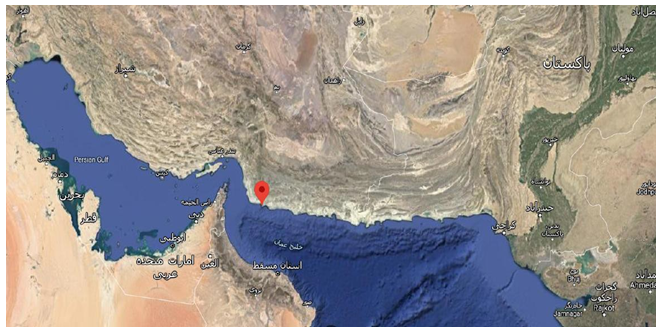
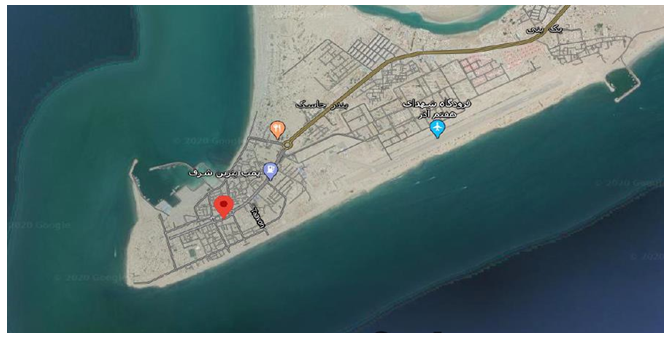
The oil ministry has issued permits for construction of two refineries with daily refining capacities of 300,000 and 150,000 barrels per day (bpd), the projects which are going to be carried out by the Execution of Imam Khomeini's Order (EIKO) and one of the subsidiaries of Bakhtar Petrochemical Company (Petro-refinery), respectively and also on March 20, 2020), Jask Export Terminal officially launched by exporting a gas condensate cargo from South Pars. Goreh-Jask pipeline project with capital $1.8b including 5 pumping houses valued at 143 million Euros, 1,000 km of 42-inch pipeline will be constructed and also 20,500,000-barrel storage tanks will be constructed in oil export terminal.
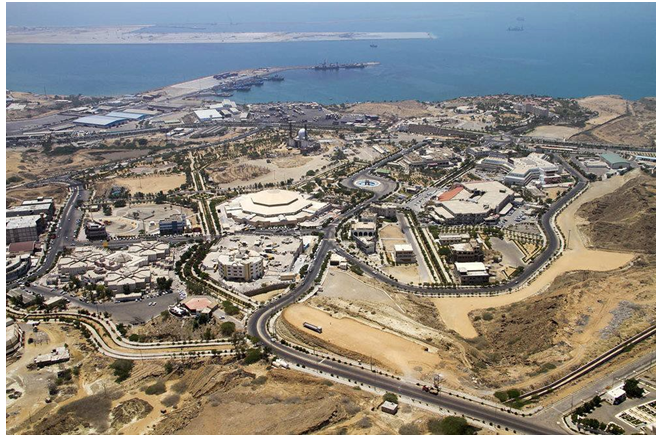
Economic Analysis of a Proposed Petroleum Refinery
This report is of the economic analysis of the preliminary feasibility of an oil petro-refinery for the SSPRC. The economic analysis will be a basic relation of potential revenues to capital and operating costs
The return on investment for the base case and for the competitive case are presented in Table 4.3.7 and Table 4.3.9. The return on investment is based on 350 operating days per year. The capital is depreciated straight-line over a 15-year life span. The economic study has done in two cases.
Return on Investment case:

Sources of Finance:
Income and Cost, Operations:
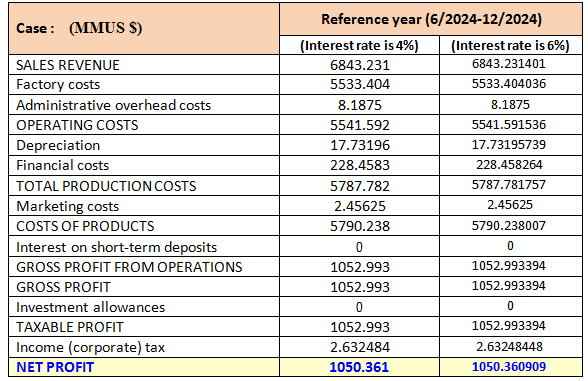
RATIOS:
Conclusion
This study has produced a survey of the crude oil production in the Shahid Soleymani Petro-refinery. It has identified the production zones/geologic formations that define the types of crude oils available. The production has been quantified and a representative composite crude oil feed stock has been identified as the potential feed to a proposed the crude oil Petro-refinery.
The representative IR-Heavy crude oil is selected for processing in a Petro-refinery processes.
A process design has been proposed which utilizes a lower temperature crude fractionation unit, a naphtha HDS/reformer to produce high octane gasoline, and a specialized DC AND FCC produce ultra-low sulfur diesel fuel.
The proposed refinery has been estimated to cost $ 7,551.14 ~ 7,779.12. More than half of this cost is associated with infrastructure and environmental compliance. This infrastructure can be easily expanded to serve additional residential, commercial, and industrial development.
The economics of the proposed petro-refinery were evaluated using 2020 production data and forecasting up to 2048 price data. The estimated return on investment based on these conditions in the existing market is 28.96 ~ 29.18 %.
Crude oil prices are currently rising sharply and there is action underway to increase crude oil production and tap additional reserves in the vicinity. Increased production will not only insure the long term profitability of this project, it may also support an increased feed rate for a minimal incremental project cost increase.
Expansion of down industries of this project, if possible, will have a significant positive impact on the profitability results.




